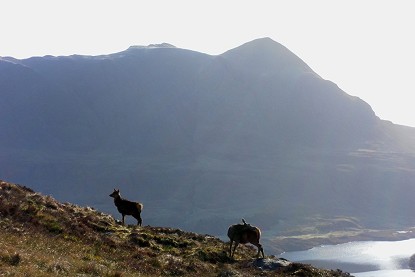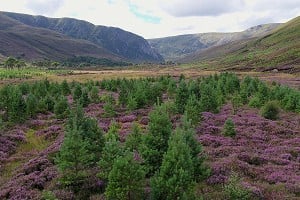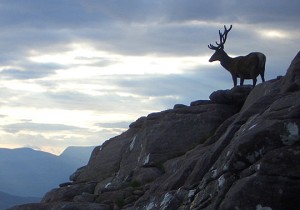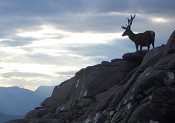
Current deer management is failing to control the environmental issue of overpopulation, according to new research; and to solve the problem we should eat about 50% of them per year.
Researchers from the University of East Anglia concentrated on the population of roe and muntjac deer in an area spanning the border of Norfolk and Suffolk.
The results, published today in the Journal of Wildlife Management, show for the first time that present management efforts are not enough to stop populations spreading out of control.
At a conservative estimate of about 1.5 million, there are more deer in the UK than at any time since the ice age, say researchers. And in the absence of natural predators populations are continuing to expand across the country. Deer numbers are causing a serious threat to biodiversity, thousands of road traffic accidents annually, and crop damage.
'Increasing deer populations are a serious threat to biodiversity'
The research team investigated the numbers, sex ratio and fertility of roe and muntjac deer across 234 km2 of forested land and heathland in Breckland, East Anglia, to measure the effectiveness of deer management. It is the first time that such a landscape-scale study has been carried out in Europe and the first time that control efforts have been compared to known numbers, they say.
They found that while deer management appeared to control numbers at a stable level, this was only because thousands of deer are 'pushed out' to the surrounding countryside each year, helping drive the further spread of deer.
In the Breckland study area, researchers identified a necessary cull of 1864 muntjac from an estimated population of 3516 (53%) and 1327 roe deer out 2211 (60%) just to offset productivity, with greater numbers needing to be culled if populations are to be reduced.
These figures greatly exceed previous cull recommendations of 30% for muntjac and 20% for roe. If the numbers were extrapolated to all species across the UK that would mean killing about 750,000 annually.
'Current approaches to deer management are failing to contain the problem – often because numbers are being underestimated. Cull targets are too low'
Lead researcher Dr Paul Dolman, from UEA's school of Environmental Sciences, said:
'Deer management is often based on guesswork. This is the first time that a population has been quantified and studied in terms of how the deer are breeding - to measure the effectiveness of deer management.'

Dr Kristin Wäber, who conducted the study while a PhD student at UEA, added:
'Native deer are an important part of our wildlife that add beauty and excitement to the countryside, but left unchecked they threaten our woodland biodiversity. Trying to control deer without a robust understanding of their true numbers can be like sleepwalking into disaster. To effectively reduce and stabilise the population establishing numbers is vital.'
'In Thetford Forest, despite an active programme of professional management culling thousand of deer, the numbers culled did not offset productivity. It is likely that this is happening in other landscapes across much of England. This is a particular problem for non-native invasive species like muntjac.'
'In recent years people have become more and more concerned about the impacts deer are having in North America, Britain and elsewhere in Europe. Increasing deer populations are a serious threat to biodiversity – particularly impacting on woodland birds such as migrant warblers and the nightingale.'
'They also carry diseases such as Lymes, and if numbers are not properly managed, they can cause damage to crops as well as road traffic accidents. To help control carbon emissions the government has set targets to increase woodfuel production, but this will be hard to achieve when woodlands are under so much pressure from deer.'
Current approaches to deer management are failing to contain the problem, say the researchers, often because numbers are being underestimated. As a result cull targets are often too low. Their research suggests that an annual cull of over 50% is necessary to curb their continuing increase and spread.
But in case anyone was worried about the waste of good venison, Dr Dolman told the BBC:
'We are not killing something and then incinerating the carcass - what we are talking about is harvesting a wild animal to supply wild free-ranging venison for our tables - for farm shops, for gastro pubs.'
'And in a way, [venison] provides a sustainable food source where you know where it comes from, you know it is ethically sourced, you know it is safe to eat, and that puts food on people's tables. As much as I love deer, to be a meat eater but then to object to the culling and harvesting of deer seems to be inconsistent.'
What are the implications elsewhere, for native species such as red deer for instance? The high deer population in upland areas has long been known to undermine biodiversity, making the natural regeneration of woodland almost impossible in many places. Perhaps the research team might turn their attention to the Scottish Highlands next?












Comments